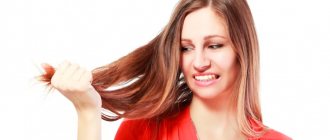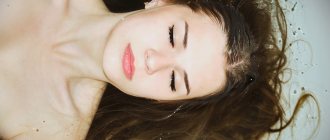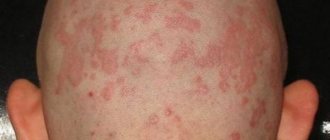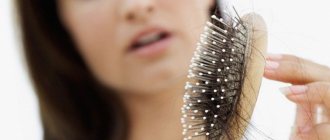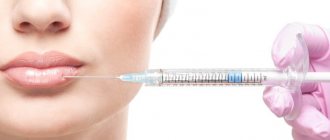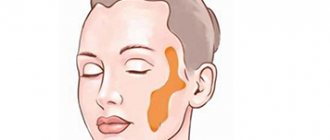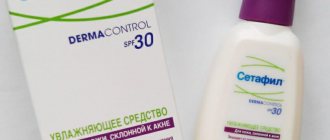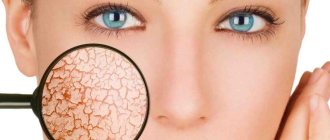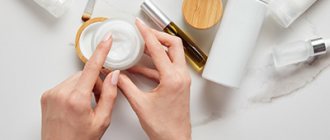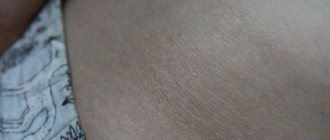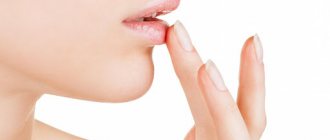Still from the film
— Fedor Grigorievich, why do you think more and more people today are faced with the problem of hair loss?
— There may be several reasons for this, the main one being genetic predisposition. I would also highlight stress, poor nutrition and poor environment. Against the background of these factors, genetics manifests itself much earlier than it should.
— Is age one of these factors?
— Age criterion is not a determining factor. A lot of patients come to us, aged 60-70 years, who have everything in order, and they just want to know how to properly care for their hair. And there are patients 18-20 years old with a genetic predisposition to hair loss, for whom a trichologist cannot help restore their previous hair volume, in which case a hair transplant is recommended.
— Who applies more often - men or women?
— If earlier we talked about the fact that this is a purely male problem, now hair loss is becoming more and more common in women. And women are also faced with the phenomenon of postpartum hair loss, which is best treated under the supervision of a trichologist.
— Can gray hair be called a sign of aging hair?
- No. There are a lot of people with gray hair, but this hair is like a lion's mane. And, on the contrary, there are people without gray hair, but with the problem of hair loss. That is, gray hair is also a completely non-determining criterion; it can appear at any age.
If we used to say that hair loss is a purely male problem, now it is becoming more and more common among women.
“However, women are very worried about gray hair. Maybe some kind of remedy for gray hair has already appeared?
- In order to change the situation, you need to know the reason. As for gray hair, its causes have not yet been established, and therefore there is no treatment. But against the background of complex treatment of hair loss, when we create optimal conditions for their life: nutrition, stimulation of growth - quite often they begin to feel much better, and the number of gray hairs decreases. But it is almost impossible to completely get rid of gray hair.
“It turns out to be a vicious circle: you have to dye your hair to hide gray hair, but the dye itself negatively affects the health of the hair. This is true?
— Hair dye does not have a significant effect on the root system. To damage it, you need to try very hard. The dye damages the structure, the hair shaft, but we treat the roots.
Photo: sovjen.ru
Photo: sovjen.ru
— What types of hair loss exist?
— There are two types of hair loss: female pattern and male pattern. Male type of hair loss (androgenetic, AGA) is characterized by the fact that hair falls out locally - in the frontal, parietal and crown areas. At the same time, the hair on the back of the head and temples is not affected. With the female, diffuse type of hair loss, uniform hair loss is characteristic, when hair falls out over the entire surface of the head.
—Which type is easier to treat?
— It is easier to treat the female type, especially if the patient consulted a doctor at an early stage of the problem. But in case of the male type, you can undergo a hair transplant and get a result guaranteed, at least by our RTH clinic.
— What determines the choice of hair treatment method?
“It all depends on how early the person asked for help.” If we have an unaddressed situation and the person is satisfied with the previous volume, we treat the hair, slow down the process of hair loss, and the patient is satisfied. But if he wants to increase the volume, then in this case we again rely on what type of hair loss he has. In the male type, it is impossible to increase the volume using trichological treatment, but in the female type, as a rule, treatment gives very good results.
— What does the treatment include?
— Treatment requires an integrated approach, and first of all, we follow the principle of “do no harm” and take into account the individual characteristics of the patient. It is impossible to say with 100% accuracy that we will be able to help, but at the same time we clearly know that we will definitely not make things worse. As a rule, treatment goes in several directions. We can recommend injection techniques to the patient - mesotherapy, plasma therapy, and so on. In addition, we prescribe topical preparations, vitamins and, if necessary, peeling preparations, which ensure the easiest and deepest penetration of lotions to the depth of the hair follicle. These are either wash-off masks or leave-in lotions that need to be applied at night.
— What recommendations do you give to your patients for home hair care?
— Many companies offer strengthening shampoos, but these are all what we call wash-off preparations that do not have any significant effect on the bulb. In principle, there are no shampoos that strengthen or stimulate hair growth, so my recommendations do not include any shampoos, mousses, balms, or masks. And for advice on care products, it is better to contact a trichologist to select them individually, depending on the problems and the initial situation with the hair.
— What products would you recommend for daily care, and which, on the contrary, would you not recommend?
— There are no shampoos for all hair types; we select a detergent individually for each patient. Sulfate-free shampoos are considered the most environmentally friendly because they do not contain preservatives or parabens, but they are not suitable for everyone. For example, they will not be suitable for a person with oily scalp, since they will not be able to wash off the oily film from the surface of the skin or clean it. There are shampoos for frequent use, so don’t be afraid to wash your hair every day if necessary. If a person is prone to dry hair, we select a shampoo for infrequent use, such as a tar-based shampoo for dry skin. If you are prone to oiliness, the shampoo should contain zinc, which dries out the scalp.
Fedor Tonkikh, trichologist:
“Age is not a determining factor in hair loss. A lot of patients come to us, aged 60-70 years, who have everything in order, and they just want to know how to properly care for their hair. And there are patients 18-20 years old with a genetic predisposition to hair loss, for whom a trichologist will no longer help restore their previous hair volume.”
— Is it possible to buy shampoo in supermarkets and does the quality of shampoo depend on its price?
— The cost of shampoo is not a determining factor. There are many examples when an expensive shampoo is not suitable, but a cheap one is fine.
— Does it make sense to buy hair masks?
— There are good masks that contain extracts of onion, garlic, pepper or mustard. These components irritate the skin, thereby improving nutrition of the root system. They work, but only if there are no serious hair problems. And we must not forget: yes, such masks take good care of your hair, but this has nothing to do with hair treatment. And what I ask all patients: do not delay your consultation with a trichologist! It is better to contact us when the first problems with your hair appear, because in this case the treatment will be faster and more effective, and the result will be better.
— If we talk about hair transplantation, how long does the procedure itself and recovery take?
— The transplant is done within four to six hours. Immediately after transplantation, small red dots remain in place of the transplanted bulbs, which disappear without a trace after six to seven days. The final result after transplantation can be seen in 9-12 months. And, of course, we give a lifetime guarantee on the growth of transplanted hair.
— Where are the bulbs transplanted from?
- The bulbs are taken from the donor area - the back of the head. If we are talking about eyebrow or beard transplantation, then the back of the head will be the donor area for these areas.
— If the area of baldness is very large, will there be enough bulbs?
— The number of transplanted bulbs depends on the condition of the donor area. If the donor area is not large enough, we will not be able to physically and technically perform the required volume. But this occurs only in extreme cases of hair loss, which we are approached with quite rarely. Well, in some cases, beard or body hair transplantation is possible. The surgeon explains all possible options during a free consultation.
— The vast majority of patients come to us when their hair has begun to fall out. But the problem begins much earlier, emphasizes Fedor Tonkikh. - First, the hair begins to grow more slowly, its structure changes, it breaks and splits, becomes thinner and weaker. Gradually, the scalp begins to glow, and even in this case, a person does not always want to notice the problem and seeks help only when obvious gaps appear on the head. And the first thing the doctor must understand is to understand why the gaps appeared - due to deterioration in the quality of the hair or due to a decrease in the number of hair follicles per square centimeter.
If a girl has been dyeing her hair for many years, the first thing she may notice is slower hair growth. That is, if you previously dyed your hair once a month, and now you notice that one dyeing session takes two months, you should be wary. And then, there is a simple self-control test that you can take yourself at home. To do this, use a stick or comb to select absolutely any random parting and see if you have short growing hair in the parting. A parting 5 centimeters long should have at least 15 short growing hairs. If you do and you notice slight hair loss, there is most likely nothing to worry about. And vice versa: if there is no active hair loss, but there is little or no growing hair, this means that it is time to see a trichologist and not wait for the problem to worsen.
Age category of materials: 18+
- Elena Sokolova
- Amurskaya Pravda from 01/16/2020
Comments
Website (3) Facebook (0) Odnoklassniki (0)
3
13.12.2020, 17:20
Or maybe the problem comes from within. It is better to get tested and go to the doctor. My hair was falling out a lot from lack of vitamins. I took a course of Merz Special Dragee and made a strengthening mask with mustard. It helped me a lot.
— Gralinda
2
03.08.2020, 21:29
My hair began to fall out very clearly without the test... I managed to slow down the process of hair loss and managed to get rid of it altogether by drinking Vasalamin (restores blood microcirculation), biotin, selenium, zinc. The doctor explained to me that poor blood circulation led to disruption of hair nutrition and the consequence was hair loss. After the first course of vasalamine I saw a pleasant result, I’m already taking the second and seeing positive dynamics - my hair began to fall out less often and I no longer have headaches, which previously did not allow me to feel comfortable.
— Olga Lomina
1
27.05.2020, 06:26
To stop hair loss, I use a whole range of measures. This list includes: mustard masks, vitamins, peptide drug Vasalamin. The latter improves the condition of the blood vessels that nourish the hair follicles. Thanks to this, massive hair loss stops and dormant hair follicles awaken.
— Sokolovna
There are no comments yet
There are no comments yet
Hair loss
Thyrotoxicosis
Menopause
Climax
Syphilis
HIV
20816 05 August
IMPORTANT!
The information in this section cannot be used for self-diagnosis and self-treatment.
In case of pain or other exacerbation of the disease, diagnostic tests should be prescribed only by the attending physician. To make a diagnosis and properly prescribe treatment, you should contact your doctor. Hair loss: causes of occurrence, what diseases it occurs with, diagnosis and treatment methods.
Definition
Normally, a person loses approximately 100 hairs every day; an increase in this number may indicate pathological processes in the body. The patient notices that a large amount of hair remains on the comb, on bed linen, towels, in the bathroom drain and on household items.
About 0.1% of the entire population of the planet has experienced increased hair loss at least once.
Hair density varies from person to person and in different areas of the body. It depends on age, gender, race, etc. The total number of hairs on the head of blondes is 140 thousand, for brown-haired people - 109 thousand, for brunettes - 102 thousand, for redheads - 88 thousand.
All hair does not grow at the same time, but goes through 3 main growth phases: anagen, catagen and telogen. Anagen is the phase of active hair growth - its duration ranges from 2 to 5 years. During the day, hair lengthens by an average of 0.1–0.4 mm, and women's hair grows faster than men's. During the catagen phase, growth slows down and lasts from 4 to 6 weeks. During the telogen phase, hair growth stops, its life cycle ends and it falls out. This period lasts 2–3 months and during this time conditions are created for the start of a new anagen phase.
Types of hair loss
Androgenetic, or androgenetic alopecia, is the most common form of hair loss, affecting up to 80% of men and 50% of women.
Diffuse alopecia is more common in women.
Psychosomatic or nervous alopecia.
Alopecia areata, which is currently considered an autoimmune process.
Cicatricial or infectious alopecia.
Age-related alopecia.
Seasonal alopecia.
Possible causes of hair loss
Pathology of hair growth (partial loss, total baldness, hirsutism, hypertrichosis) occurs due to disturbances in the hair cycle. The most common cases of hair loss are the premature end of the anagen phase and the early start of the catagen phase.
During puberty, when hormonal changes occur in the body, there is increased sebum production and excessive hair loss. Upon completion of puberty, most people experience normal processes.
The capillaries of the papilla in males who are genetically predisposed to baldness have increased sensitivity to male sex hormones. With an increase in androgen content during puberty, persistent spasm of the blood vessels in the scalp papillae occurs and, as a result, hair loss. On the contrary, on other parts of the body, including the face, such men experience abundant hair growth, which is also explained by the action of androgens.
Despite the increased secretion of estrogen during pregnancy, many women complain of excess hair loss, especially in the 2nd and 3rd trimesters. This is due to the fact that at this time almost all the nutrients entering the woman’s body are spent on fetal growth. Postpartum hair loss is caused by an increase in the amount of hair in the telogen phase.
Typically, a woman's hair growth cycles resume 4-6 months after giving birth.
Increased hair loss can be caused by stress. In patients with disturbances in periods of sleep and wakefulness, memory loss, and obsessive states, various changes in the biopotentials of the brain are observed, which can lead to disruption of the trophism of the hair follicle.
Exogenous factors (insolation, dry air, use of a hot hair dryer, aggressive shampoos, dyes) have a negative impact on the condition of the hair. This occurs due to disruption of the “tile-like” arrangement of hair scales, leading to splitting of the hair shaft and increased fragility.
Taking certain medications (non-steroidal anti-inflammatory drugs, anticoagulants, thyreostatics, antidepressants, cytostatics, beta-blockers, alpha interferon drugs, anticonvulsants, antiparkinsonian, anthelmintic, antiherpetic, antiviral, antibacterial drugs, neuroleptics, oral contraceptives, etc.) can also lead to increased hair loss.
80% of cancer patients taking cytotoxic drugs experience hair loss within 10 days of starting treatment.
Infectious, autoimmune, systemic diseases, endocrine pathologies also affect excessive hair loss.
As a person ages, hair growth on the scalp may be stable, but the anagen phase tends to decrease. Hair becomes thinner and brittle. Hair loss is more common in women over 50 years of age and is diffuse in nature.
Diseases leading to excessive hair loss
- Diseases of the thyroid gland, hypothalamic-pituitary system, ovaries, adrenal glands, etc.
- Autoimmune diseases (nodular goiter, idiopathic hypoparathyroidism, Hashimoto's thyroiditis).
- Dermatological diseases (seborrhea, psoriasis, eczema, etc.).
- Diseases of internal organs and systems (gastritis, colitis, kidney and liver diseases).
- Vitamin deficiencies.
- Chronic infections (tonsillitis, sinusitis, sinusitis).
- Cytomegalovirus infection.
- Syphilis.
- Tuberculosis.
- Immunodeficiency states.
Which doctors should you contact if you have excessive hair loss?
If you have excessive hair loss, you should consult a dermatologist or trichologist. In the future, a consultation with a phthisiatrician or rheumatologist may be recommended.
Diagnosis and examinations for excessive hair loss
To find out the cause of hair loss, the doctor may prescribe a set of laboratory and instrumental examination methods:
- clinical blood test with determination of hemoglobin concentration, number of erythrocytes, leukocytes and platelets, hematocrit and erythrocyte indices (MCV, RDW, MCH, MCHC), leukoformula and ESR (with microscopy of a blood smear in the presence of pathological changes);
How to disguise receding hairline
When bald spots become noticeable, many try to disguise their obvious manifestation. Knowing how to hide receding hairline makes the problem less noticeable to others.
There are several basic camouflage techniques:
- Wigs that cover bald patches on the sides of the forehead and at the back of the head.
- An unusual hairstyle or haircut in which the contour of the hairline becomes varied.
- The use of sprays, aerosols and mousses that make hair fuller and hide bald patches at the temples.
- Complete shaving of the hair on the head. This technique is not suitable for everyone, but many celebrities have absolutely no hair on their heads and this does not spoil their image.
All methods of camouflage reduce psychological stress during treatment, which should not be delayed, relying on the fact that hair loss is insignificant and does not require serious attention.
How to add volume to your hair ↑
There are several simple methods to make your hair look fuller. Take note of these recommendations.
- Dry your hair with a hairdryer with your head down - the roots will remember the raised state and, returning to a vertical position, you will get a fluffy hairstyle.
- Lay your hair on the other side - by changing the usual place of parting, you can easily create natural volume.
- Use dry shampoo - the product absorbs excess sebum and prolongs the freshness of your hair. But don’t get carried away with it so as not to dry out your scalp.
- Make a multi-layered haircut - graduated hair looks fuller.
- Use large diameter curlers - soft waves or large curls add volume to any hair.
- Perform accent coloring - highlights, balayage, shatush and other modern techniques add volume to the hair.
- Use styling products to add volume to your hair - style with light products that do not weigh down the roots.
| These are quick ways that will help you get visual fullness of your hair. But to achieve lasting volume, you need to provide your hair with high-quality care using special products. We'll tell you what products should appear on the bathroom shelf to keep your hair voluminous and healthy. |
Forms of alopecia
Baldness comes in several forms. They differ from each other in their causes and location.
Androgenic
This is the most common type of baldness, since its causes are hidden in the work of hormones. Active production of dihydrotestosterone, a male hormone, has a harmful effect on hair follicles. The hair itself gradually becomes thinner, then disappears completely.
Alopecia is noticed when a bald patch appears simultaneously on the head in the forehead and crown area, gradually increasing in size, and then completely merging. As a result, the hairline completely disappears and only sparse hairs remain at the edges of the head. The degree of baldness is assessed using the Norwood scale, which is represented by 7 points. Where the first degree reflects only a slight shift of the hairline upward in the forehead area, and the seventh shows the complete absence of hair in the upper part of the head.
All kinds of medications and therapeutic techniques are applicable and have an effect only at the beginning of the disease. In advanced cases, only hair transplantation will help.
Diffuse alopecia
Characterized by widespread hair loss. At the same time, the scalp becomes noticeably thinner. The hair itself becomes thinner and weaker, its shine disappears and takes on a sickly appearance. The cause of this alopecia is stress, long-term use of antibiotics, vitamin deficiency, chemotherapy and radiation. This form of alopecia is reversible and easier to treat.
Alopecia areata
Loss in this form is characterized by localization. Hair can disappear in several areas at once. And it doesn't stop at the head. This includes hair loss in the beard, eyebrows and eyelashes. It is unknown what causes the loss. However, various harmful factors cannot be ruled out, be they diseases, chemical or other effects.
Areas of hair loss acquire rounded shapes, which gradually increase in size and completely merge into larger ones. The lesions on the crown, increasing in size, connect with the bald patches that appear on the forehead of men.
The treatment is quite complex and lengthy. Often it does not completely heal the hair. Can be outpatient or inpatient with the use of many medications, vitamins and radiation, physical therapy and other things. Transplantation in this case is not an effective treatment method. There are cases when it is strictly contraindicated.
Seborrheic alopecia
This form of alopecia occurs due to a disease of the scalp. Seborrhea is characterized by greasiness, flaking of the scalp, dandruff, itching, and hair loss. This disease occurs due to disruption of the sebaceous glands of the scalp. Seborrheic alopecia is completely eliminated with proper and timely treatment of the skin disease.
Scarring alopecia
This type of alopecia is manifested by the absence of hair in places of scars and scars, the causes of which are burns, wounds, as well as traces of past diseases. Various purulent, bacterial, fungal and viral diseases can leave behind significant scars. These include lupus erythematosus, smallpox, manifestations of Staphylococcus aureus and others.
Experiments with hairstyles, namely very tight braiding and hair extensions, can also lead to scarring changes in the skin. As a result, hair follicles are damaged due to scarring. And the presence of hair in this area is impossible.
In this case, hair transplantation helps.
Thin hair: why and why
Hair thickness is largely determined by a set of genetic factors. This is both good and bad! It’s good, because if you’ve had thin hair all your life, you know exactly what the reason is, but it’s bad, because you can fight genetics, but victory is not guaranteed.
Everything becomes much more complicated if you had thick or just normal hair, which for some reason began to thin out. A trichologist will help you find this reason by analyzing a set of individual factors. The culprits for deterioration can be a variety of things: improper care, unsuccessful dyeing or bleaching, and too hot air during installation. Often the reasons are not related to external factors, but to internal ones, such as hormonal imbalance, stress, or even chronic lack of sleep.
No matter which of these options is yours, you can help your hair today. Below you will find tips that will give your strands the long-awaited thickness.
Coconut oil for hair and skin: 12 miraculous uses
Avoid heat styling
Yes, we all know perfectly well how long styling takes at minimum temperatures. But fine hair will appreciate your care! You will have to forget about using straightening irons - such an aggressive effect on thin hair will not lead to anything good. By the way, various methods of hair styling are now becoming more and more popular, in which a hair dryer is not used at all.
In addition, it would be useful to protect your hair from exposure to the sun. For example, you can sew a hat or panama hat with your own hands - our catalog contains patterns of hats that are suitable for this purpose!
Beauty Recipes: DIY Deep Conditioning Hair Balm
